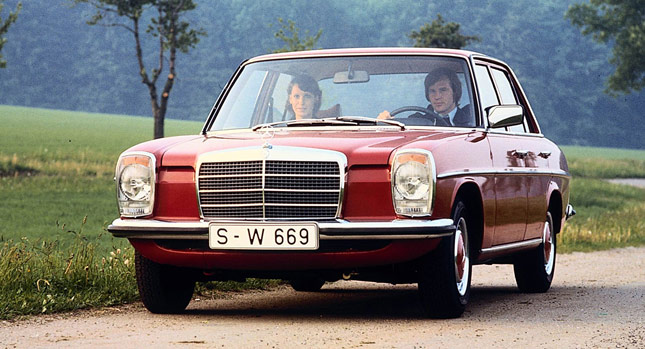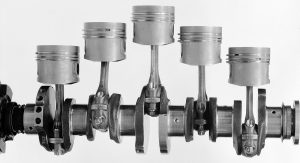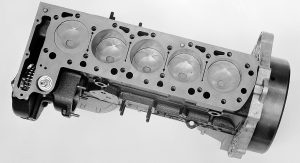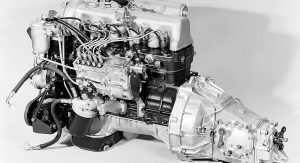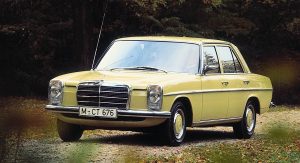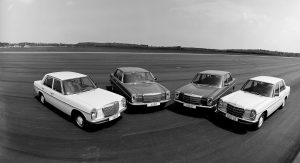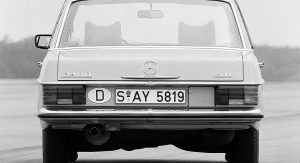Four decades ago, Mercedes-Benz launched the 240 D; the most powerful and fastest diesel car of its day and the world’s first series-production car with a five-cylinder oil burner. The Mercedes-Benz 240 D 3.0 launched in 1974 was powered by a 79hp (80PS) five-cylinder engine.
With the new engine, the 240 D 3.0 accelerated from 0 to 100 km/h (62 mph) in 19.9 seconds and reached a top speed of 148 km/h (92 mph). Of course, these numbers sound like a joke today, but 40 years ago, they made the 240 D 3.0 the undisputed leader in the field of diesel-powered cars.
Mercedes-Benz developed the OM 617 five-cylinder engine because four-cylinder diesel engines had reached their limits in terms of output. Tests conducted with a six-cylinder engine revealed it to be too long, too heavy, and too expensive. Five cylinders appeared to represent the ideal compromise. The engine was built on the basis of a 2.4-liter OM 616 engine, with Mercedes-Benz increasing cubic capacity to 3,005 cc and adding a new Bosch injection pump and a mechanical governor.
An important innovation was the use of a pneumatic stopping mechanism rather than the mechanical variant of the 2.4-liter engine, enabling the new engine to be switched off with the ignition key – a first for a diesel engine at the time.
Furthermore, the engine of the 240 D 3.0 was also started up by turning the key, as opposed to the previous practice of pulling a lever. When the driver turned the ignition key, the pre-heating process was initiated and an indicator lamp went on. After a short time, the indicator lamp went off, and the engine could be started up with the key. That’s pretty much the start procedure used today in diesel cars.
Mercedes-Benz produced 53,690 units of the 240 D 3.0 between 1974 and 1976, while overall sales of the W 115 generation (later evolved into the E-Class) stood at 945,206 diesel vehicles.
By Dan Mihalascu
PHOTO GALLERY



